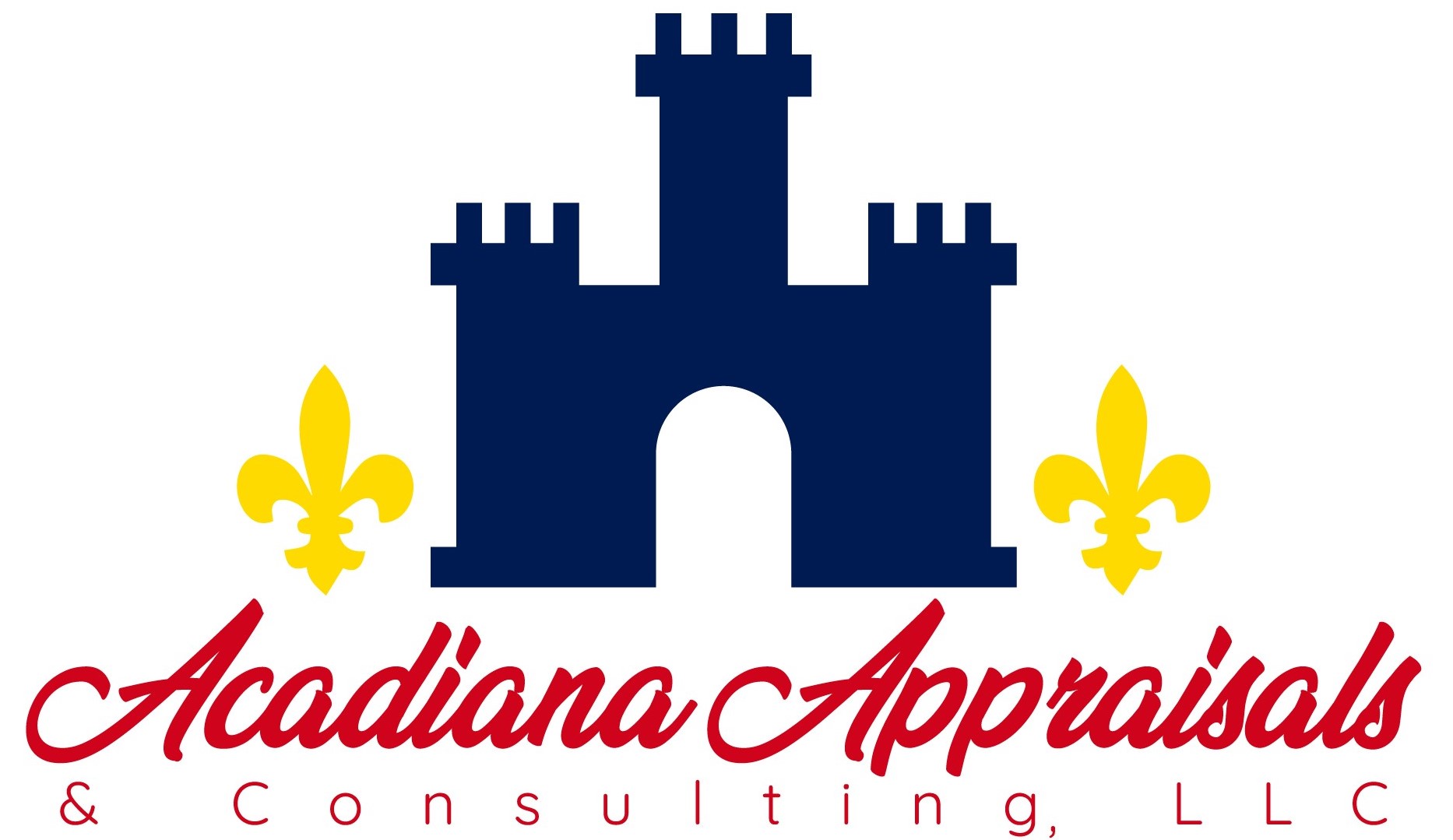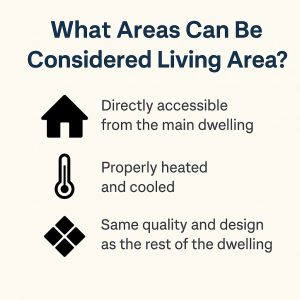In residential appraisals, defining what qualifies as living area is crucial, especially when dealing with converted spaces such as attic renovations, garage conversions, or enclosed patios. Though terms like “finished area” and “living area” are sometimes used interchangeably, appraisers rely on specific standards to determine what can be counted in Gross Living Area (GLA). Below is a summary based on ANSI Z765-2021, FHA, and VA guidelines.
ANSI Z765-2021 Standard: Defining Finished Area
The ANSI standard provides voluntary guidance for measuring single-family dwellings. It focuses on “finished area”—an enclosed space suitable for year-round use.
Key Criteria:
- Finish Consistency: Must be finished to a level consistent with the rest of the home.
- Ceiling Height:
- Minimum of 7 feet.
- Under beams/ducts: minimum 6 ft. 4 in.
- Sloped ceilings: at least half of the area must have 7 ft. ceilings; areas under 5 ft. are excluded.
- Accessibility: Must be directly accessible from other finished areas via a finished hallway or stairwell.
FHA Guidelines: Living Area and GLA Standards
FHA defines Gross Living Area as finished, above-grade space measured from the exterior perimeter.
Included in GLA:
- Room additions or garage conversions that are:
- Functionally accessible from the main dwelling.
- Permanently heated.
- Similar in design and construction quality.
Not Included in GLA:
- Finished basements or unfinished attic spaces.
- Additions not meeting the criteria above.
- Accessory Dwelling Units (ADUs): reported separately.
General Living Unit Requirements:
- Must contain potable water, safe sewage disposal, a full bathroom, kitchen facilities, adequate electricity, heating, and space for living.
- No minimum size requirement for one- to four-unit dwellings (except manufactured homes: min. 400 sq. ft.).
VA Guidelines: Gross Living Area and Valuation
The VA also defines GLA as finished, habitable, above-grade space measured from exterior walls.
GLA Inclusions:
- Finished attics, garage/carport conversions, and room additions if:
- Accessible from the main house.
- Heated permanently.
- Similar in quality and design to the home.
GLA Exclusions:
- Basements (regardless of finish level).
- Non-contiguous or partially below-grade spaces, unless market-accepted and similar in utility.
- ADUs and inferior additions: valued separately.
General Requirements:
- Each unit must support living, sleeping, cooking, and sanitation.
- Appraisers must evaluate marketability of unique homes (e.g., dome or earth-sheltered) and ceiling height compliance.
Common Elements Across All Guidelines
All three sources emphasize that in order for a space to be considered living area:
- It must be directly accessible from the main dwelling.
- It must have a permanent and sufficient heat source.
- It must be finished in a manner consistent with the main dwelling in terms of quality, design, and construction.
Common Issues with Converted Patios and Garages
Many patio enclosures and garage conversions do not meet the above criteria and should not be counted in the GLA. Common issues include:
- Retention of exterior features such as:
- Exterior windows still separating the space from the main house
- Vinyl siding or Hardie board used as interior walls
- Bare concrete floors
- Original soffits and fascia left exposed
- Thin aluminum walls and ceilings not consistent with standard framing
- Step-down slabs indicating a different foundation thickness
- Garage doors still in place in garage conversions
- Attic conversions that do not meet minimum ceiling height requirements
Appraisers should evaluate these details carefully to determine whether a converted space qualifies as living area, and if not, report it separately with consideration of its contributory value.
Sources: ANSI Z765-2021, FHA Single Family Housing Policy Handbook, VA Lenders Handbook.

